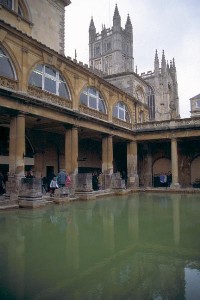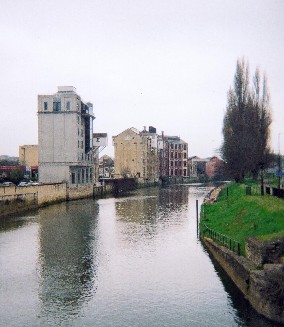|
|
|
| Home | Roman Bath | Dark Ages | Middle Ages | Upheaval | Georgian |
Nineteenth century |
Twentieth century |
Twenty first century |
Bath in the Roman age 100-400AD |
|
The waters of Minerva |
|
A curse-thrower's words:The scribe writes so slowly. I stand excruciated with his laxity. I could have written it myself ten times over but for the impropriety....
|
|
 The Italians in Britain The Italians in Britain
Soldiers from Italy's sun-drenched hills arrived in Britain to find a damp, gloomy, rainy, cold and altogether depressing outpost. Where were the paved streets and civilised public life which they had known? Britain offered heavily forested land and a complicated political rivalry between its many tribal communities. No decent wine, no sunshine, no roads: an uninspiring prospect to all stationed here. The sacred springOne corner of this remotest island of the Roman empire did offer some relief, however. The locals had discovered a hot spring, a miracle. Water poured from the ground at a temperature too hot to touch - water which promised to cure all evil. The spring was dedicated to a British deity, Sul. The Romans adopted this spring as their own, naming its site Aquae Sulis - Waters of Sulis. Sul, they reasoned, equated more or less with their own healing Minerva - and the two cultures intermingled over the years.
|
|
 The temple of Minerva The temple of Minerva
A temple was erected by the source of the hot spring,and a bathing suite established nearby. Cold plunge baths and tepid baths, and of course a main Great Bath, formed part of the leisure and health complex at Aquae Sulis. It must have seemed like a welcome break from the unforgiving British climate - warm water, invigorating steam and strigil-bearing slaves at the ready. For the full story, visit http://www.romanbaths.co.uk/, the site for the Roman Baths Museum, then check out the real thing, right in the heart of Bath. I also liked this site about life in Roman Bath: http://www.bates.edu/~mimber/Rciv/Bath/webd3a.htm - and if you lok at the British Heritage section (articles) at http://www.thehistorynet.com/BritishHeritage/, there's a long article about the Roman baths. (if this link moves please let me know - these people are demon updaters - good for them, not for me!) |
|
You may be wondering why I have a picture of a gasometer in 1909 on my site about Bath. This is why: I found this picture (see acknowledgements and guilty admissions) and realised I had no idea that gasometers even existed at this time. Bear in mind, this is before cars. Before radio. British Electroplated Silver was still a big thing. And the post could arrive on the same day it was sent.
So the pictures in Fabled City are the ones which I felt were those most worth sharing - unusual, unexpected, often glossed-over visions of Bath. If you have access to more pictures like these, please get in touch. If I have used an image which belongs to you, please also get in touch - I have tried to acknowledge but I don't know the true sources for some of my images. Thanks.
Last updated 21 February, 2001
FabledCity by| Home | Roman Bath | Dark Ages | Middle Ages | Upheaval | Georgian |
Nineteenth century |
Twentieth century |
Twenty first century |